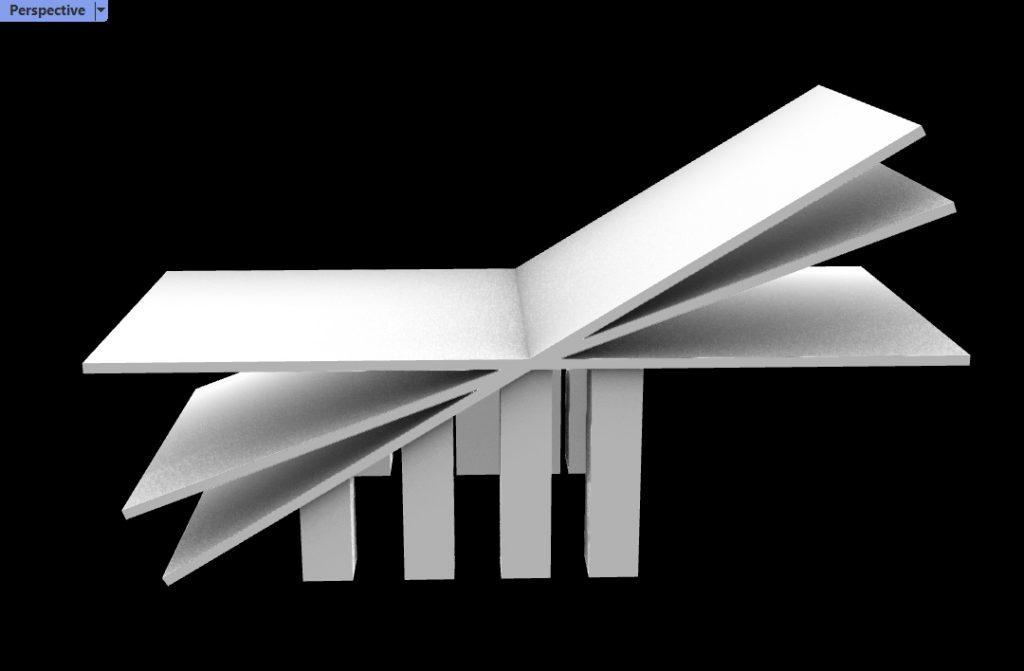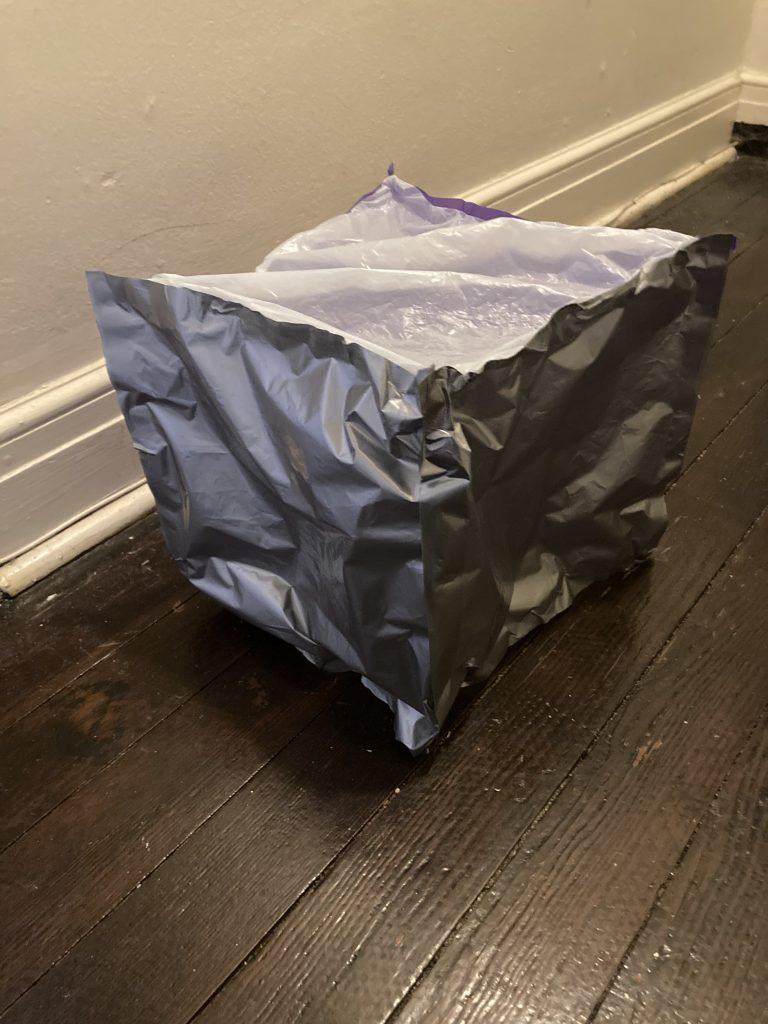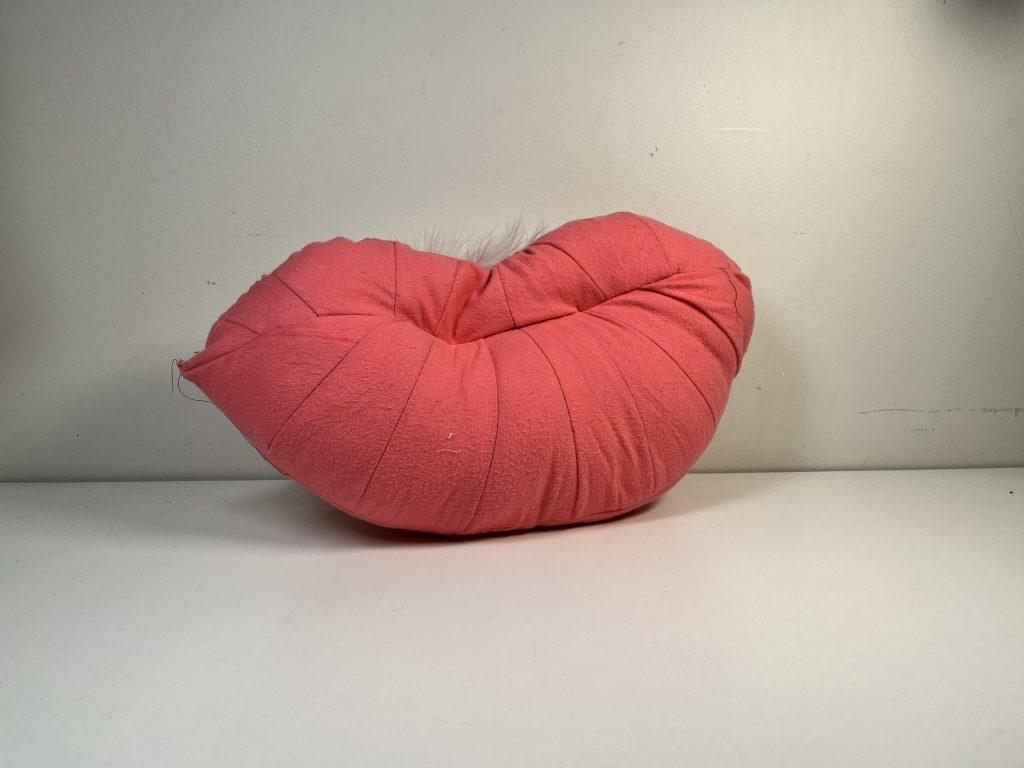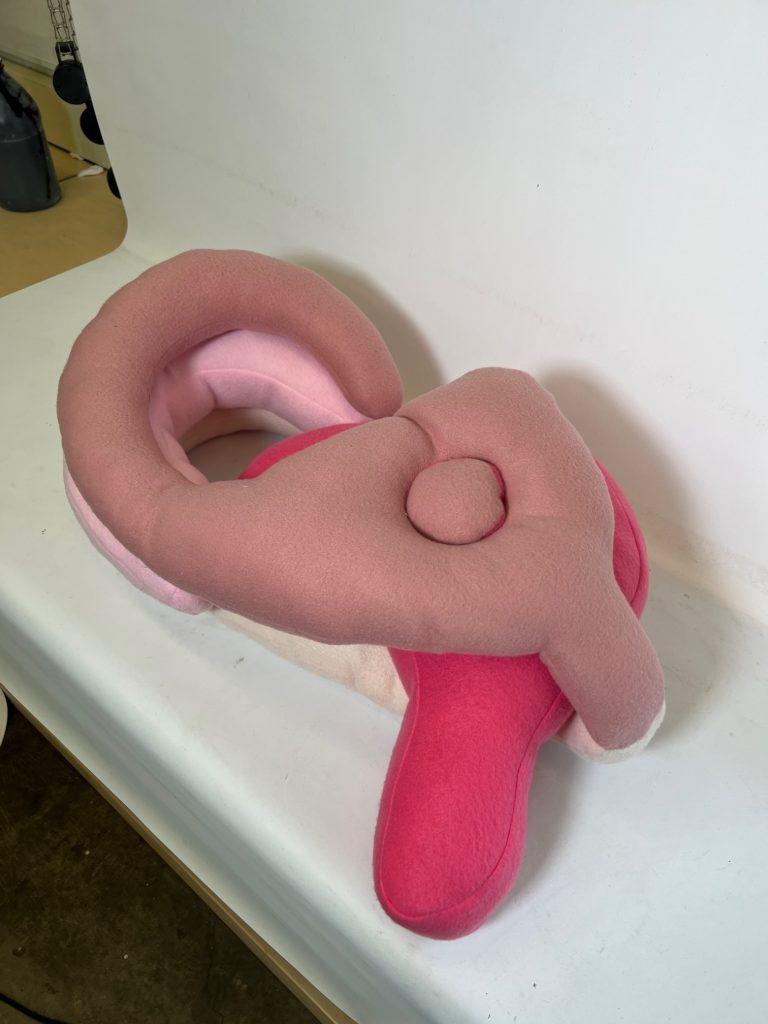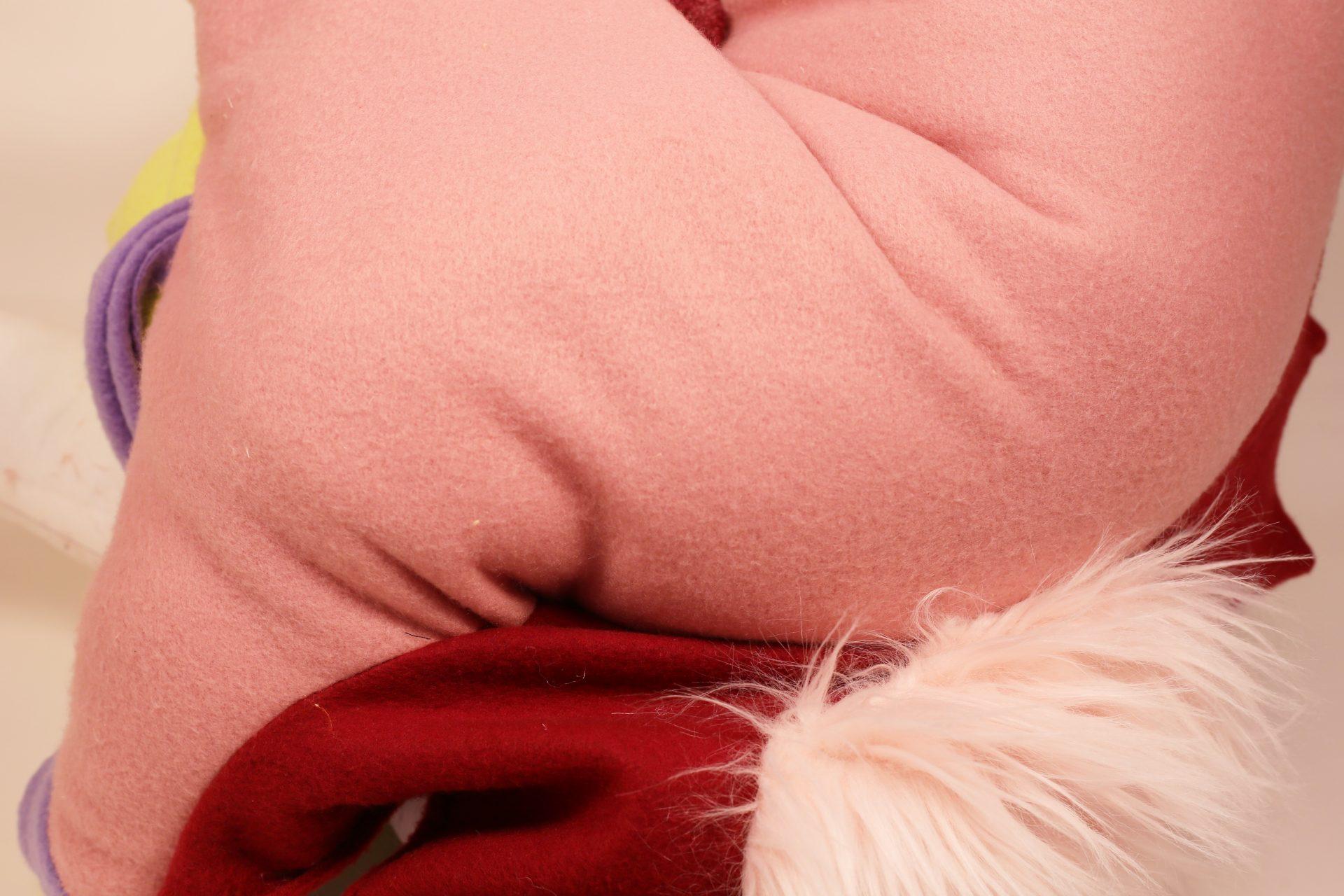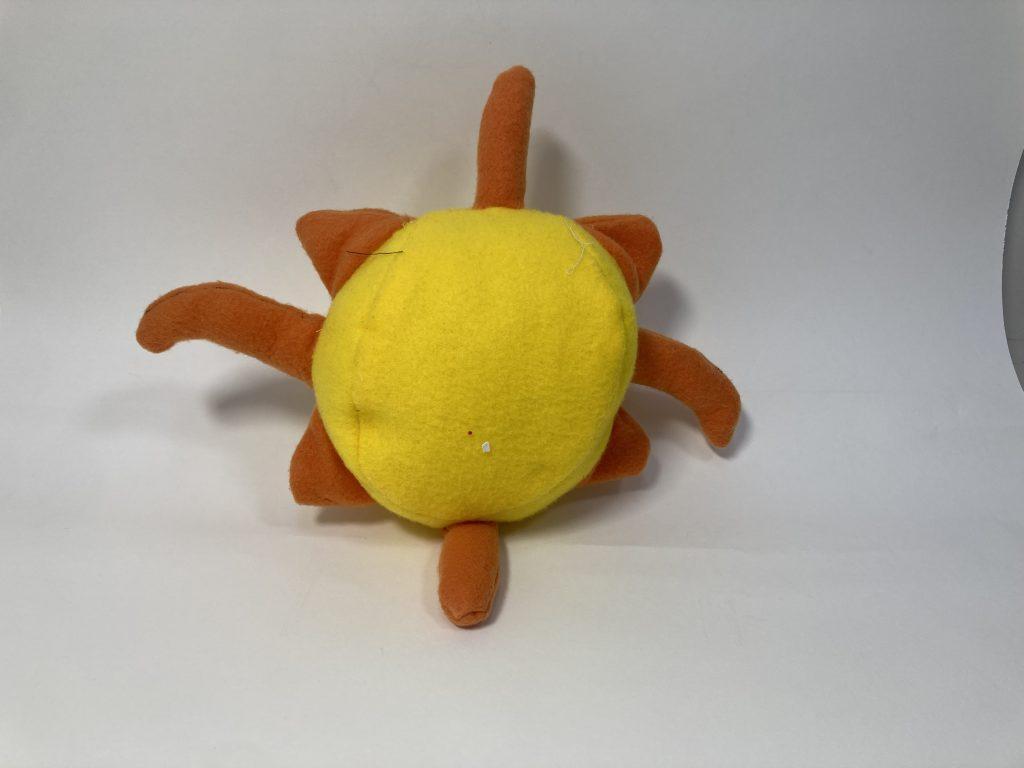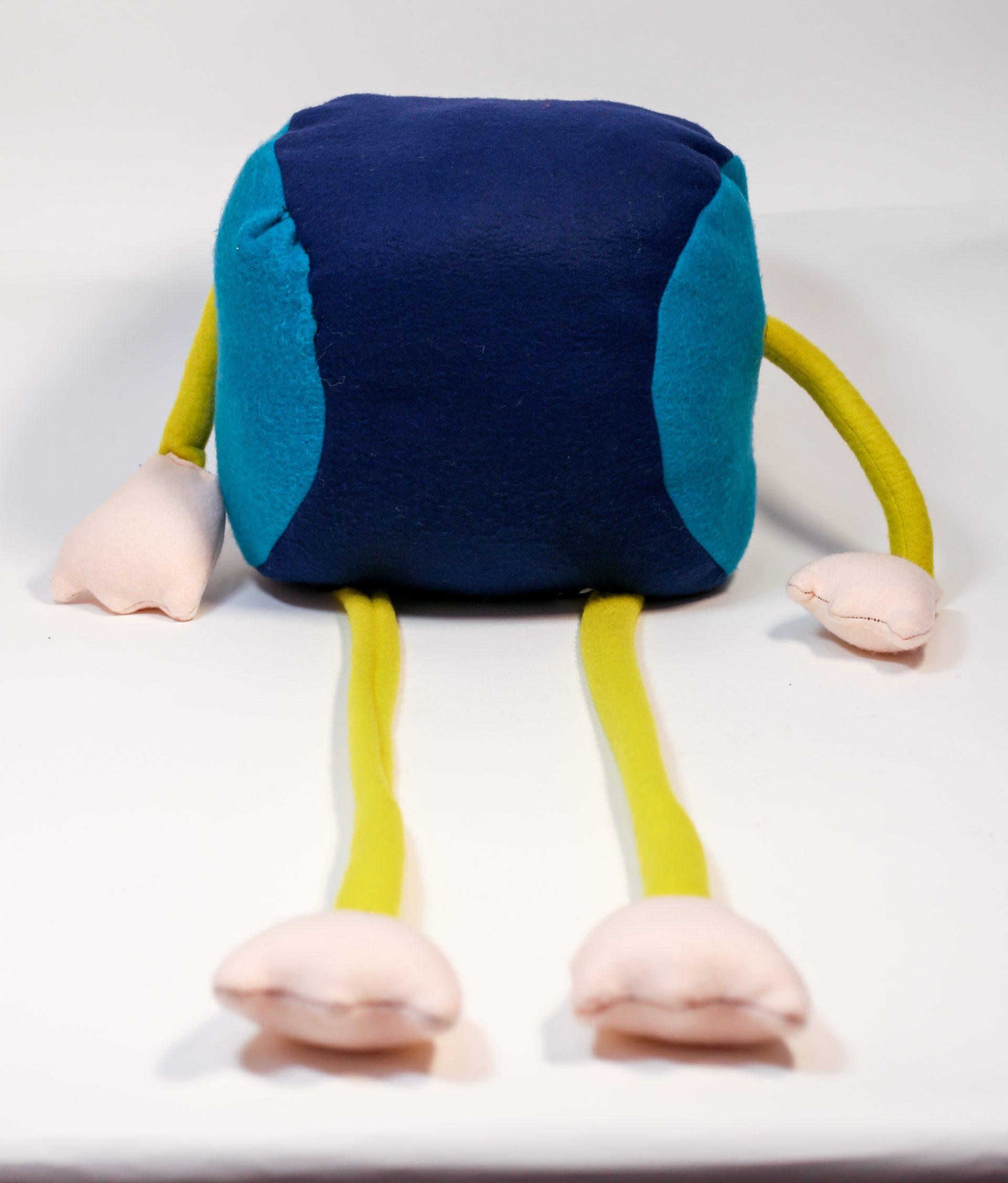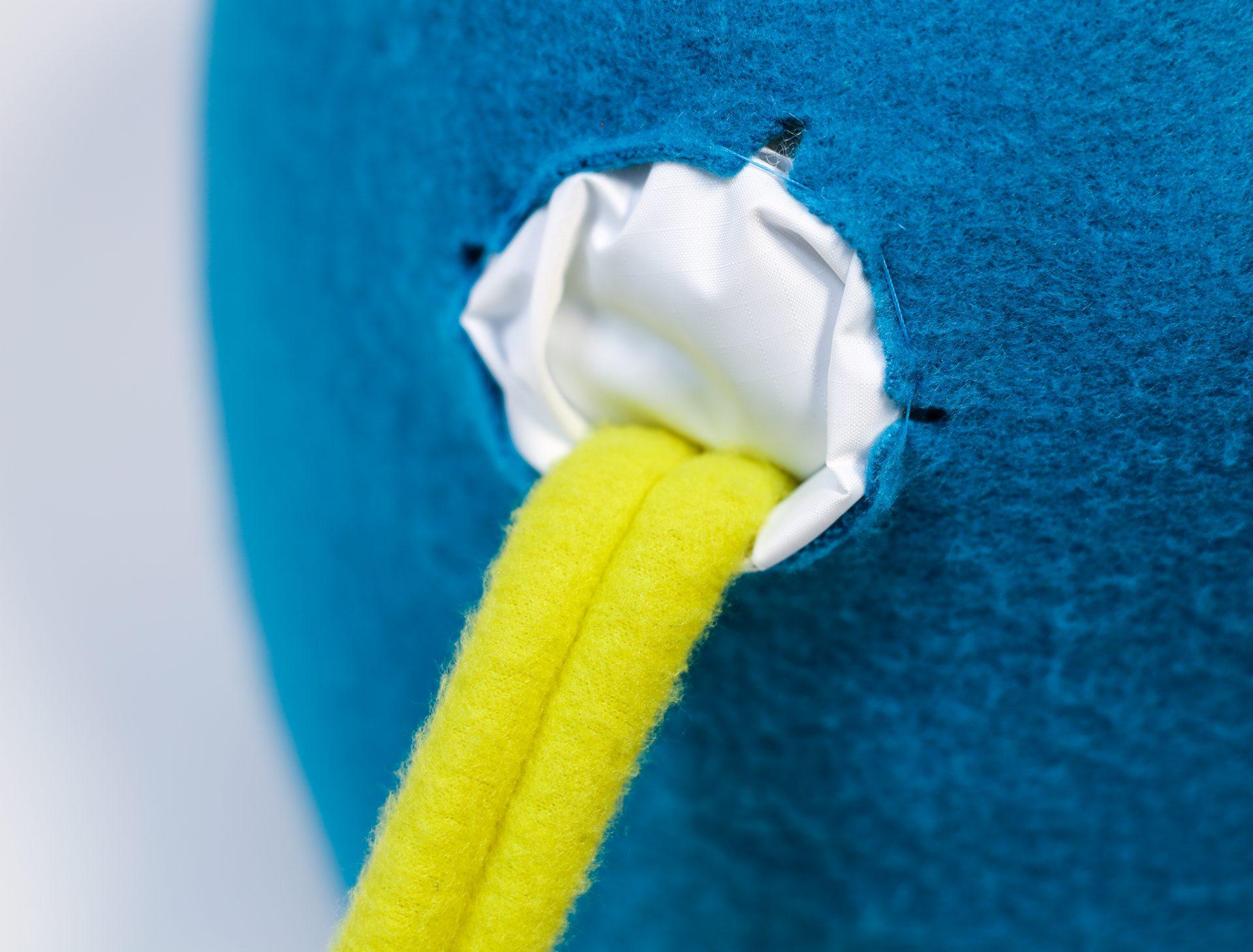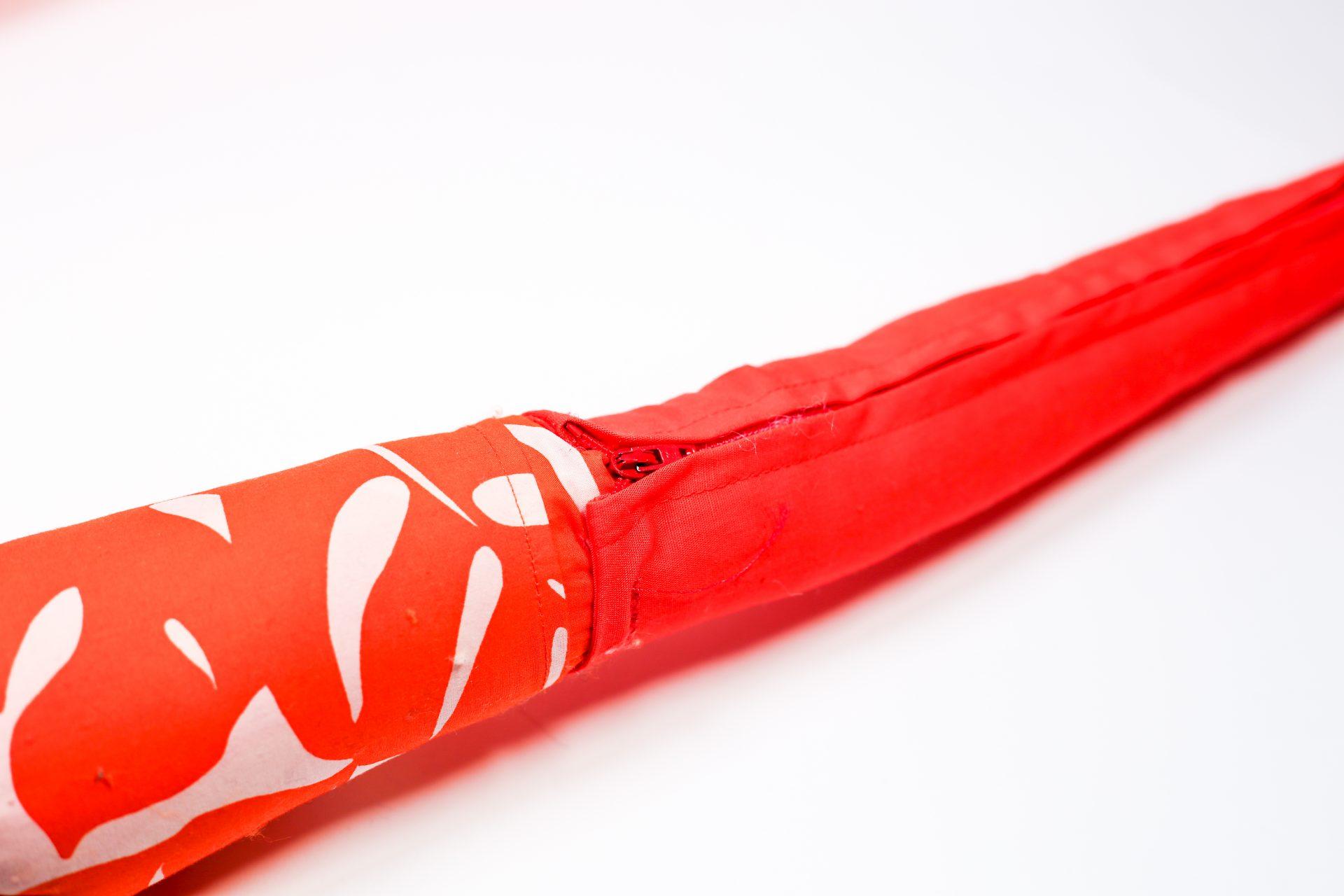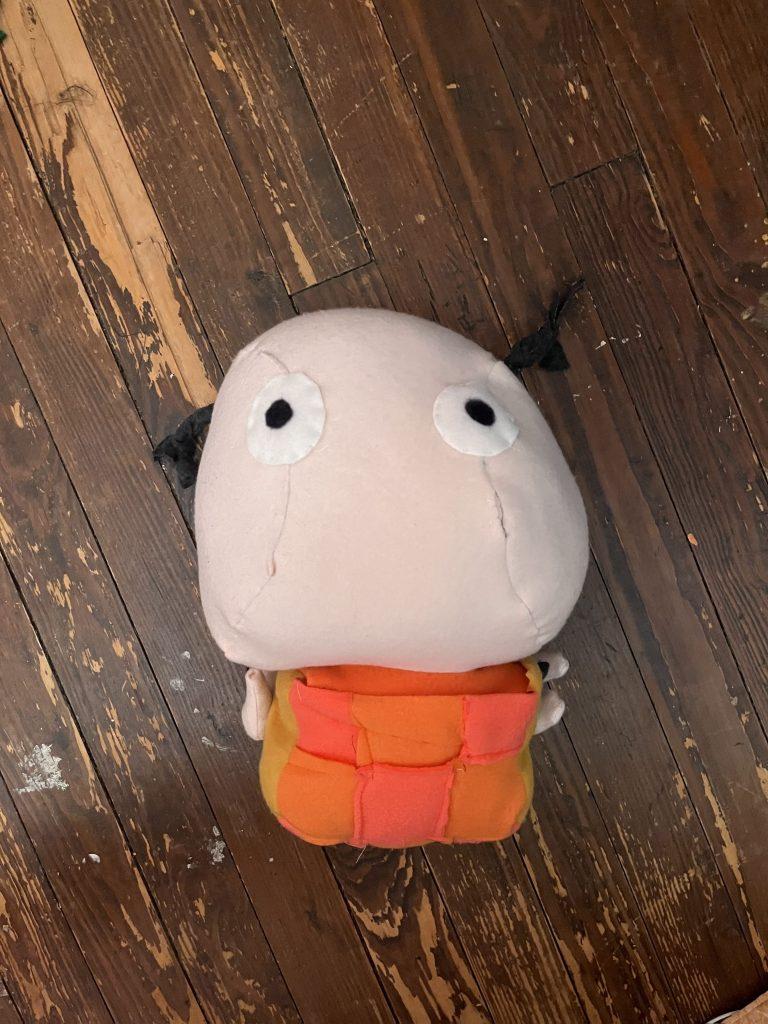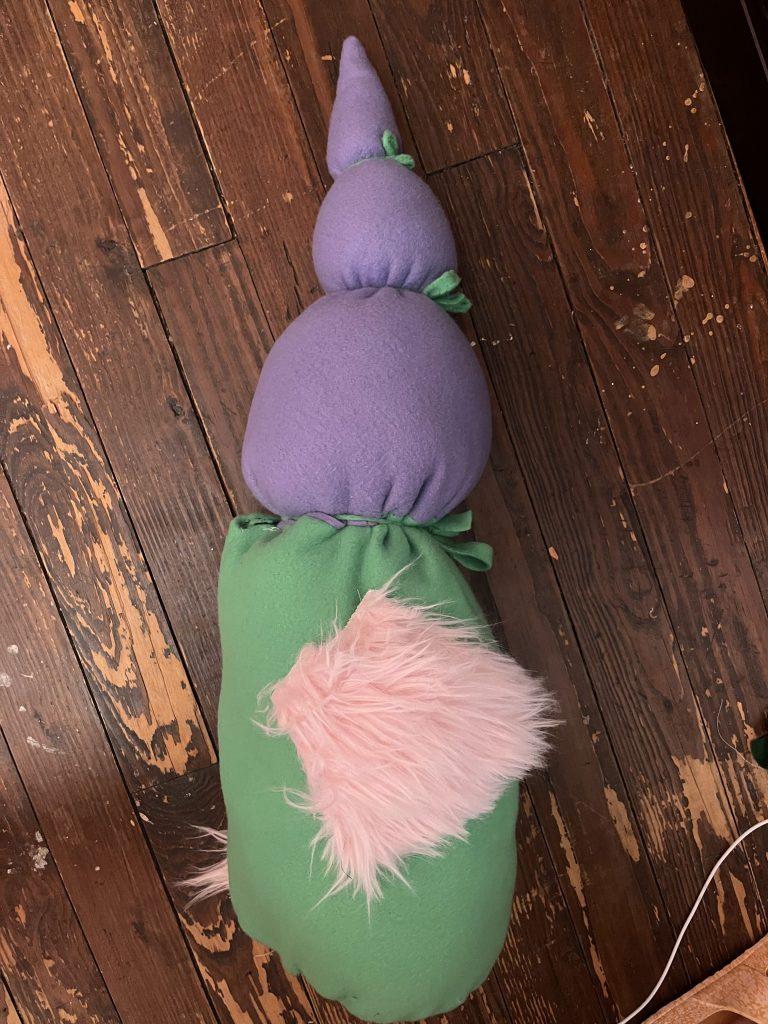In this project, I explored different forms and developed three odd, playful, interactive while fluffy and squishy objects. Enjoy!
Ballon Dog
This object was inspired by the famous balloon dog. I think it would be cool to explore the boundary between the textural, material, and property differences between the stuffed fabric made by ‘balloon dog’ and its original form. To understand how objects can transform into an entirely new form, a basic geometry through folding, twisting, and closing/opening is the goal of the push and pull project. To accomplish the fabric version of the balloon dog, a tube was made with one side closed and the other for stuff. By following the procedure to make the original balloon dog, I had to fill and fold to the ideal shape and then secure it with strings to maintain the shapes. After that, I swapped out some linkage with velcros and pins to make the form more natural.
Meat
This object was inspired by the fabric sculpture ‘meat carcasses’ by Tamara Kostianovasky. The image of slaughtered livestock – the vulgarity of fleshy carcasses – is softened into plush cuts of meat. The grotesque, gross-looking, agitating form contrasting with the soft, sweet, detailed material creates great chemistry I want to explore in this object. The artist makes these sculptures using her own cloth, and I chose to get inspired by the leftover scrap pieces by our peers. I want to let those forms inform my design.
- Things I want to capture in the meat: flesh, bone, and slabs of fat.
- Things I want to do with the object: interactive, different textures, surreal colors
With knowing those, I started mutilating the fabric using darts, strengthening them to create volume, inverting them to create contract and etc. The interactive portion is that the bones ate removable, and the pieces of green, and purple fabric are all pullable to shrink and expand the form. Overall this is definitely a tough yet rewarding object I created.
Oranges *baby edition
This object came to my mind as my friend peeled open a mandarine while commenting on the orange fluffy fabric. And ya, here is where that landed. This is the only object that I had a pattern created for constancy and uniformity. The challenges in this object lies in the constacution: from sewing the peel becuase the flfy frabic are very thick or to stuffing all the slices into the peels, to have the explosive effect when someone takes out the stem to picking out the correct ratio of colors. It took a lot of thought and try and erros to get it right.
Now! You can pluck the stem, slowly peel open the ‘skin’ and take out the slices of ‘baby mandarines’!
